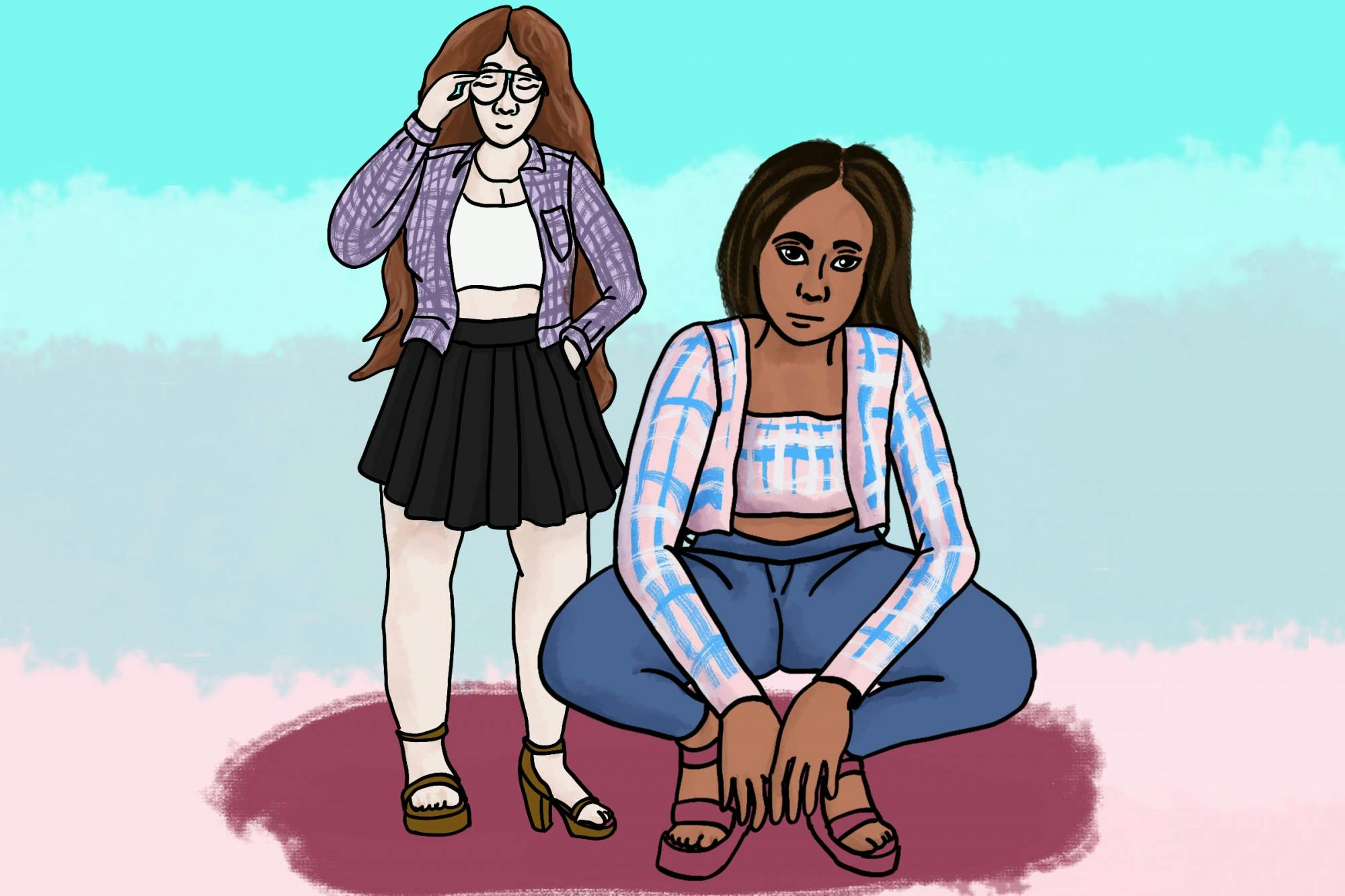Like many, I joined TikTok at the beginning of the pandemic — almost jokingly, perhaps, but also because I was craving some real semblance of community. TikTok offered an effective (albeit dystopian) way to connect to my peers over a diverse range of content: dance videos, comedy, makeup. I was immediately drawn to the endless stream of fashion videos — produced not only by the typical “influencers,” but also by normal people. I’d watch an outfit video made by a college student stuck at home followed by one by an eccentric grandmother.
When clothing stores closed, people turned to their own closets, experimenting with the clothing they owned rather than buying new ones. For both the consumer and the creator (roles often uniquely blurred on the app), TikTok provided a method of escape. A non judgmental space emerged, poised at the intersection between an inability to leave home and a need for self-expression.
Unexpected outfit combinations flourished: clashing patterns, homemade tie-dye shirts, old cowboy boots paired with long dresses. Some creators even brought back the trend of “upcycling” by repurposing old items: jeans were cut and sewn into tops, while oversized button downs were transformed into skirts. People experimented with fashion from the safety of their own homes, without the threat of judgment from schoolmates or colleagues. Stylistic freedom was found through restrictions, not despite them.
This past weekend my TikTok feed was overwhelmed by a flood of influencers at Coachella — all dressed in glitter and designer clothes. The old imagination of TikTok’s fashion content felt absent as I scrolled through a stream of sponsored posts and brand-new, expensive ensembles. How did an app originally praised for its relaxed authenticity devolve into a parade of consumerism and superficiality?
Something has shifted. The app has largely become a vehicle for advertisement, with massive fashion companies such as Shein and Revolve realizing TikTok’s incredible selling power. Sponsored posts (marked by a subtle “#ad” in the caption) are typical, with influencers giving stilted endorsements of brands.
My feed contains a steady stream of unsustainable clothing hauls. A new term, “microtrend,” has materialized, ascribed to the brief style trends that regularly course through the app. Over a couple weeks, clothing items will surge in popularity, and then plummet to insignificance.
Stephanie Lee ’24 discussed how quickly “trendy” items lose their relevance on TikTok.
“It's just really interesting how fast the trends move on the app,” Lee said. “It's so much more difficult to parse through the trends and find more long-lasting style inspiration.”
According to some students, TikTok’s microtrends have not noticeably impacted style at Dartmouth.. Lee said that some Dartmouth students have incorporated smaller aspects of internet fashion — such as baby tees and low-waisted jeans from the recent Y2K revival — into usual campus style, rather than follow a trend in totality.
Sadie Weil ’25 noted that weather conditions, like snow and freezing temperatures, perhaps inhibit “Dartmouth style”— a concept difficult to define as a single category.
“[Dartmouth style is] a lot more dressed-down and casual,” Weil said. “People adhere to trends but they don't sacrifice their own comfort.”
Weil noted that the informality of Dartmouth style is often relieving. Thankfully, sweatpants and leggings are never discouraged. Though elaborate outfits pervade TikTok and Instagram, there’s no pressure to dress-up on campus. Both Weil and Lee highlighted the presence of athleisure — casual athletic attire — on campus, influenced by the large presence of student-athletes at the College.
On the other hand, Nate Gordon ’25 said that this laidback, more homogenous style environment can make it intimidating to take fashion risks at Dartmouth.
“A lot of people [at Dartmouth] don't really utilize fashion as much of a form of self-expression,” Gordon said, “style doesn't seem to be that big of a deal here, which can discourage people from experimenting with fashion.”
For many, it is a tenuous balance between embracing style and recognizing certain constraints, such as weather conditions or campus style norms. On-nights present a rare opportunity to wear brighter colors and flair, particularly for themed events. With these campus-specific considerations, Lee explained that her style has shifted since coming to Dartmouth from Los Angeles — though she still seeks inspiration on the internet.
“At the end of the day, I am a Dartmouth student. That influences my fashion the most,” Lee said. “I will gather influences from TikTok, Instagram and all types of social media. I’ll find trends that way. What really guides my purchases is what I’ll actually wear on campus.”
Does TikTok’s fashion content have any relevance amongst college students? It seems TikTok, once an anomaly amongst other forms of social media, has fallen victim to the same fate as Instagram: an over-curated, sleek platform fueled by brand sponsorships and envy. Previously, TikTok’s fashion videos mostly encouraged creativity. I would return to my own closet with excitement. Now, they inspire a distinct wanting. A want for more clothes. Exotic vacations. A weekend at Coachella.
With style, it is admittedly difficult to separate self-expression from materialism; perhaps they are always connected. I hope to remember TikTok’s original spirit — a momentary flash of funky outfits and unbridled resourcefulness, with limitations forcing experimentation. With a return to this attitude, I want to imagine new possibilities with my own closet, and perhaps (shockingly) the New Hampshire winter.




